VHF Radio Licence
What is a VHF Radio Licence?
A VHF Radio Licence in Australia is an essential certification for anyone operating a marine VHF radio. This licence ensures that operators are knowledgeable about proper radio communication protocols, safety procedures, and regulatory requirements, allowing for effective and reliable communication on the water.
Whether you’re a recreational boater, a commercial vessel operator, or involved in maritime activities, having a VHF Radio Licence enhances safety and ensures compliance with Australian maritime regulations. Obtaining this licence typically involves completing a training course and passing an examination, which covers topics such as radio operation, distress and safety signals, and maritime communication practices. Ensure your maritime adventures are safe and compliant by securing your VHF Radio Licence today Book Online.
Do You Need a Licence to Operate a VHF Radio in Australia?
Yes, you need a licence to operate a VHF radio in Australia, but it’s important to note that it’s the operator who needs to be licensed, not the individual VHF radio units. The VHF Radio Licence, officially known as the Short Range Operator Certificate of Proficiency (SROCP) or the (LROCP) Long Range Operator Certificate of Proficiency, is required for anyone using a VHF marine radio. This certification ensures that operators are trained in proper radio communication protocols, safety procedures, and regulations, which are crucial for safe and effective communication on the water. By obtaining this licence, you can enhance maritime safety and ensure compliance with Australian maritime laws.
What is the Difference Between SROCP and LROCP?
The Short Range Operator Certificate of Proficiency (SROCP) and the Long Range Operator Certificate of Proficiency (LROCP) are two distinct marine radio licences in Australia. The SROCP is for operating VHF radios within coastal and inland waters, typically up to 20 nautical miles offshore. In contrast, the LROCP covers both VHF and HF radios, allowing for long-distance and international communication. The LROCP involves more comprehensive training and examination, suitable for those requiring extensive maritime communication capabilities.
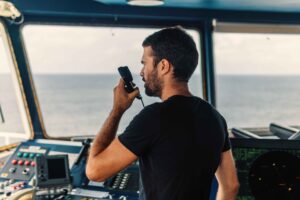
What VHF Channel Should I Use in Australia?
In Australia, VHF Channel 16 is the primary emergency and calling channel used for distress, safety, and initial contact. Once contact is established, switch to a working channel, such as Channel 72 or Channel 77, for further communication. Always monitor Channel 16 while at sea for safety and regulatory compliance.
What are the Three Types of Marine Radios?
The three main types of marine radios are 27 MHz radios, VHF (Very High Frequency) radios, and MF/HF (Medium Frequency/High Frequency) radios. 27 MHz radios are commonly used for short-range communication, primarily by recreational boaters. VHF radios are more widely used for both short and medium-range communication, up to 20 nautical miles, and are essential for safety and regulatory compliance. MF/HF radios are designed for long-distance communication, including offshore and international waters, providing reliable communication over vast distances.
What Do I Need to Use a VHF Radio?
To use a VHF radio in Australia, you need one of the following licences: the Short Range Operator Certificate of Proficiency (SROCP) or the Long Range Operator Certificate of Proficiency (LROCP). These certifications ensure you are trained in proper radio communication protocols, safety procedures, and regulatory requirements. Additionally, you’ll need a VHF radio device that complies with Australian standards, an antenna, and an understanding of the relevant VHF channels and their uses.
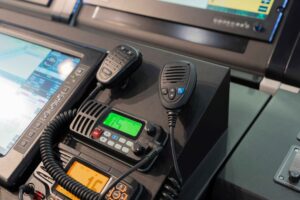
How Do You Use a VHF Marine Radio in Australia?
Using a VHF marine radio in Australia involves several steps to ensure proper communication and safety. First, obtain the appropriate licence, either the Short Range Operator Certificate of Proficiency (SROCP) or the Long Range Operator Certificate of Proficiency (LROCP).
Turn on your VHF radio and set it to Channel 16, the primary emergency and calling channel. Perform a radio check to ensure your equipment is functioning correctly. To initiate a call, state the name of the vessel you are calling three times, followed by your vessel’s name and your message. Once contact is established, switch to a working channel like Channel 72 or 77 for further communication. Always monitor Channel 16 while at sea for emergency messages and safety information.
VHF Radio Licence Australia Test: What You Need to Know
To obtain a VHF radio licence in Australia, you must pass a test for either the Short Range Operator Certificate of Proficiency (SROCP) or the Long Range Operator Certificate of Proficiency (LROCP). The test assesses your knowledge of radio operation, safety procedures, and communication protocols. Topics include VHF channel usage, distress and emergency signals, and routine communication procedures. Preparing for the test involves studying relevant materials, completing a training course, and practicing with sample questions. Passing the test ensures you are qualified to operate a VHF marine radio safely and effectively.
VHF Radio Licence Australia Test Practice: Enhance Your Preparation
Preparing for the VHF radio licence test in Australia, whether it’s for the Short Range Operator Certificate of Proficiency (SROCP) or the Long Range Operator Certificate of Proficiency (LROCP), is crucial for success. To effectively prepare, practice with sample questions tailored to the LROCP test. You can access a comprehensive set of revision questions here. These practice questions cover essential topics such as VHF channel usage, distress and emergency signals, and routine communication procedures, providing a solid foundation for your test.
VHF Radio Licence Cost
Cost of the VHF radio licence (LROCP) is $295 through Superyacht Crew Academy
Where Can I Book The VHF Radio Licence?
Superyacht Crew Academy offers the comprehensive (LROCP) course Long Range Operator Certificate of Proficiency which can be booked online here.
The course is 1 day in total
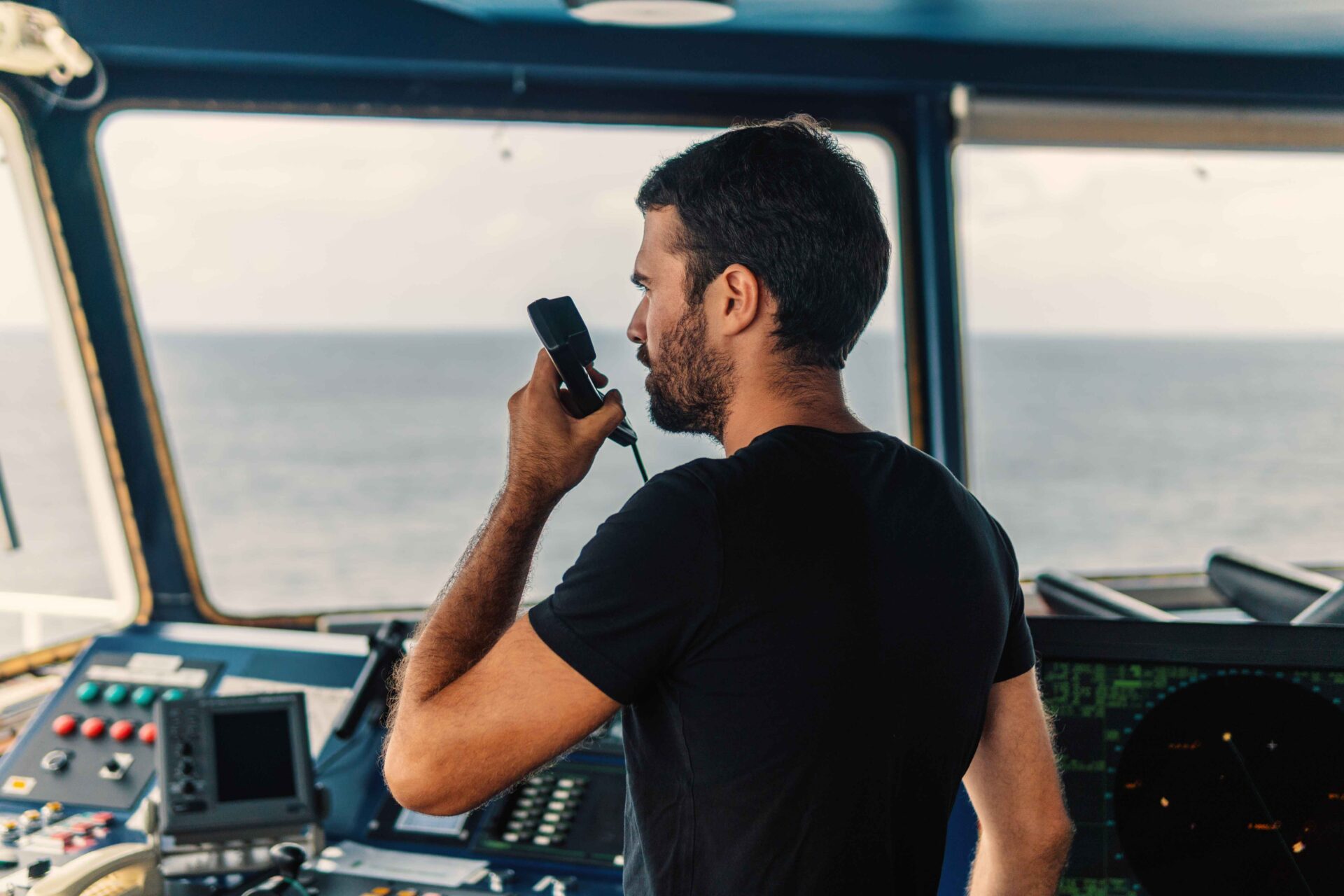

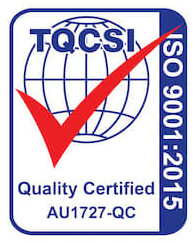)
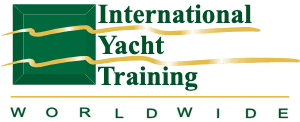)